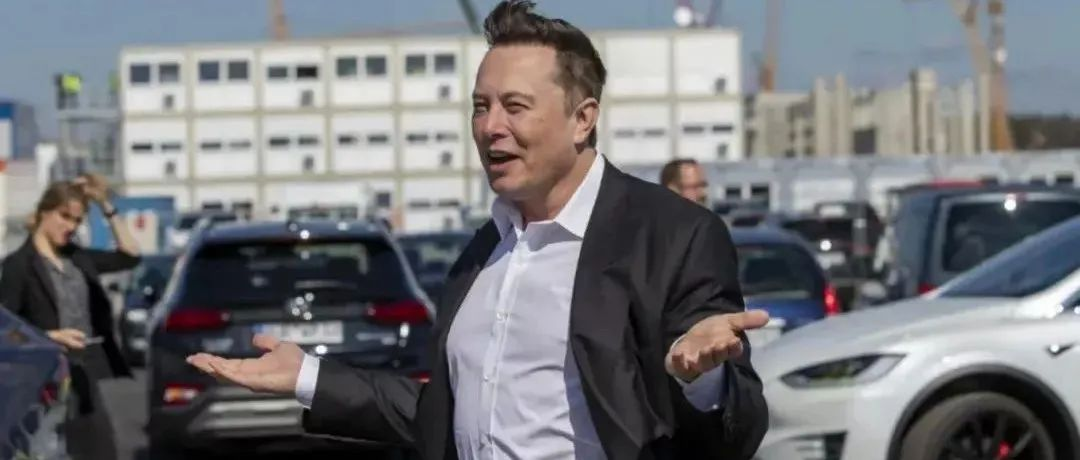Author: Guo Hehe
Many of my friends have been complaining recently that it’s not a good time to buy a car this year. Why is it that the price of cars is getting higher and higher? One of my friends who wanted to buy a new car for his wedding recently had to give up because of the soaring prices and long wait times. He asked me with a big question mark, “Is it due to the manufacturer’s good sales that the price has gone up?”
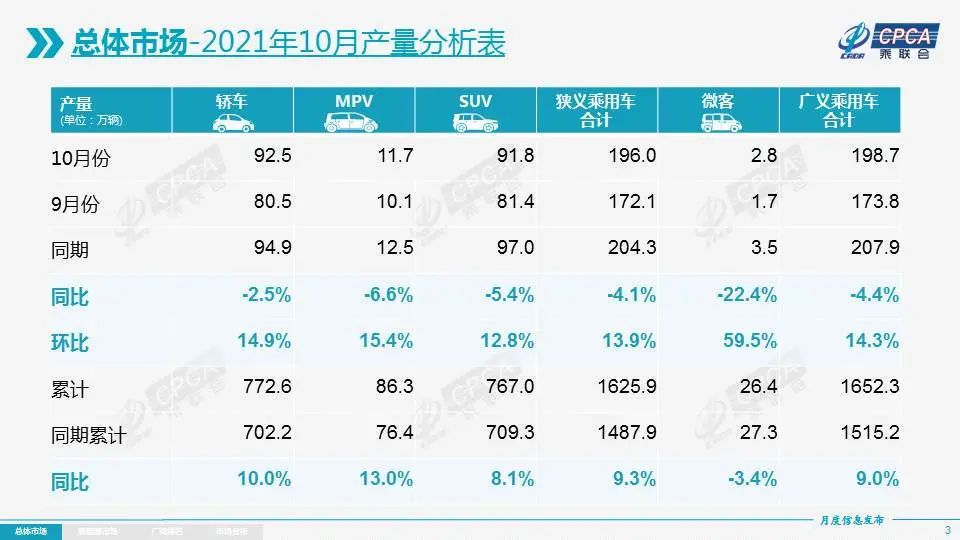
According to the latest retail sales data from the China Automobile Dealers Association Automotive Market Research (CALAAMR) in October, domestic narrow passenger car market sales reached 1.714 million units, a year-on-year decrease of 14.0% and a month-on-month increase of 8.4%. The cumulative sales from January to October were 16.224 million units, a year-on-year increase of 8.7%.
In terms of data, this year’s car sales have declined, but why have car prices soared? Friends who pay attention to the automobile market may already be able to answer this question, because of the chip problem.
“Chip Shortage”: The Root Cause of Soaring Car Prices
Yes, limited by the unstable global pandemic situation, chip processing has been severely affected. “Chip shortage” and the surge in raw material prices have caused many countries with incomplete automotive industry chains to encounter bottlenecks in automobile production. Market research shows that the chip shortage is the darkest hour before dawn, and the darkest moment of the third quarter’s automobile chip supply has passed, with an expected 20% improvement in chip supply compared to the previous month in October.

Entering October, the supply of automotive chips across the country has slightly recovered, but there is still a large gap compared to the expected supply. Production bottlenecks still exist. In October, passenger car production was 1.96 million units, a year-on-year decrease of 4.1%. Among them, the year-on-year production of luxury brands decreased by 8%, that of joint venture brands decreased by 20%, and that of independent brands increased by 16%. Interestingly, due to excellent domestic epidemic control and increased use of localized suppliers, independent brands were relatively less affected by chip constraints.
If it was just the chip shortage, we wouldn’t have to write an article to discuss this issue today. It’s like having an argument with your girlfriend. It’s her problem, but not entirely her problem, after all, you brought it upon yourself.
The same goes for the skyrocketing car prices, it’s the chip problem, but not entirely just the chip problem.
The Rise of New Energy Vehicles
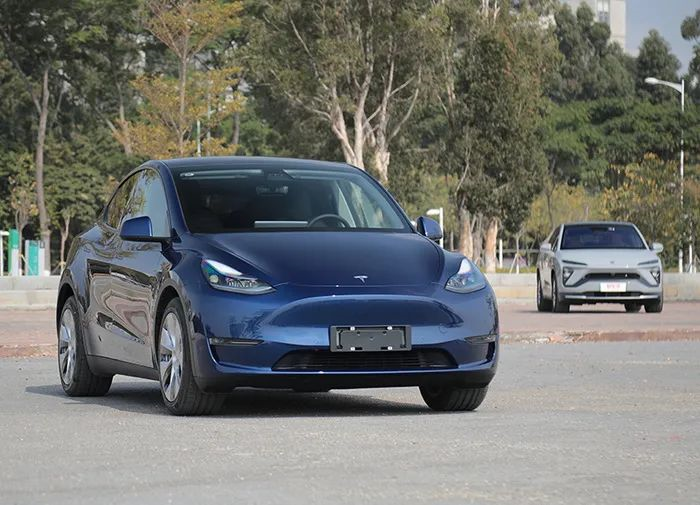 We can see from the sales of new energy vehicles that the wholesale sales of new energy passenger vehicles in October reached 368,000 units, a month-on-month increase of 6.3% and a year-on-year increase of 148.1%. From January to October, the wholesale sales of new energy passenger vehicles reached 2.381 million units, up 204.3% year-on-year. In October, the retail sales of new energy passenger vehicles reached 321,000 units, an increase of 141.1% year-on-year but a decrease of 3.9% month-on-month. From January to October, retail sales of new energy vehicles reached 2.139 million units, a year-on-year increase of 191.9%.
We can see from the sales of new energy vehicles that the wholesale sales of new energy passenger vehicles in October reached 368,000 units, a month-on-month increase of 6.3% and a year-on-year increase of 148.1%. From January to October, the wholesale sales of new energy passenger vehicles reached 2.381 million units, up 204.3% year-on-year. In October, the retail sales of new energy passenger vehicles reached 321,000 units, an increase of 141.1% year-on-year but a decrease of 3.9% month-on-month. From January to October, retail sales of new energy vehicles reached 2.139 million units, a year-on-year increase of 191.9%.
In summary, the sales of new energy vehicles are showing a booming trend. Even with the chip shortage, how can they still sell so well?
If the numbers are too dry, I’ll show a picture below to illustrate how well new energy vehicles are selling.
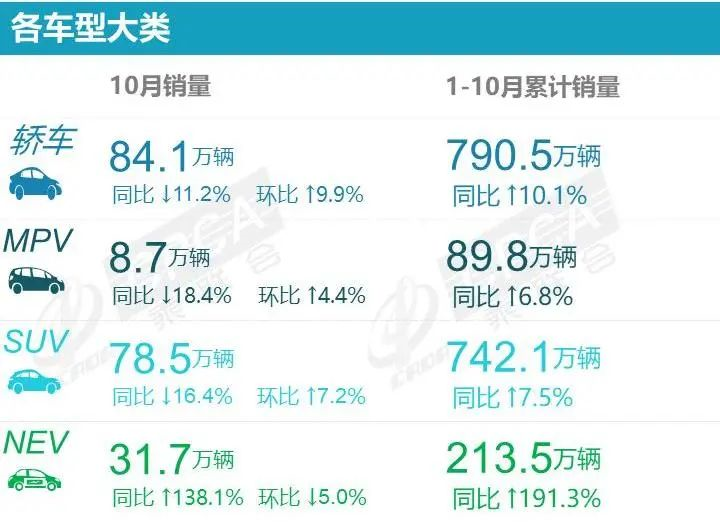
Let’s take a few key points. First, let’s look at the industry leader, Tesla. In October 2021, Tesla China’s wholesale sales reached 54,391 units, marking two consecutive months of terminal sales exceeding 50,000 units. However, one thing to note is that in October, 40,666 units were exported, and only 13,725 units were sold domestically. In comparison, September’s wholesale sales reached 56,006 units, with 3,853 units exported and 53,153 units sold domestically. This significant difference between exports and domestic sales does not mean that domestic demand for Tesla has diminished. This is because Tesla’s Shanghai Super Factory is one of its two major global factories, and Tesla prioritizes supplying overseas markets in the first two months of each quarter before delivering to Chinese consumers in bulk in the third month. In terms of overall sales, Tesla’s growth rate is still very scary.
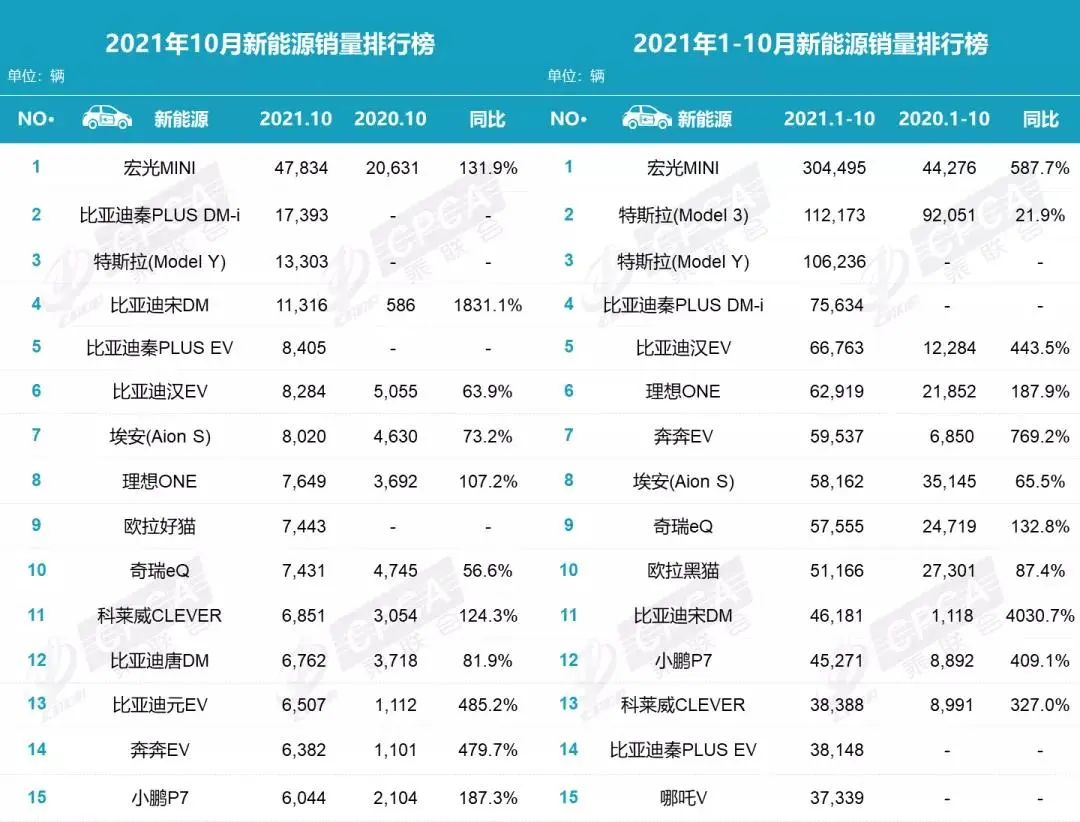
Let’s now take a look at China’s new energy vehicles. The Wuling Hong Guang MINI EV naturally goes without saying. Its low price paired with flexible and varied use cases keeps it in the spotlight, with sales still ranking first. Other traditional automakers have also performed relatively well, with SAIC and GAC standing out. BYD’s pure electric and plug-in hybrid vehicles also performed well. The manufacturers that had wholesale sales exceeding 10,000 units were BYD (80,373 units), SAIC Passenger Vehicle (24,085 units), GAC Aion (12,064 units), and XPeng Motors (10,138 units). In October, the sales of plug-in hybrid vehicles at BYD reached 38,641 units, a month-on-month increase of 17%, driving the growth of affordable plug-in hybrid vehicles as a new highlight.For new energy vehicles, the demand for chips is higher, but their sales are still rising despite the chip shortage. This cannot be solely attributed to the chip problem. Because fuel prices continue to soar, many consumers prefer to choose new energy vehicles due to the pressure from license plates and fuel expenses. This demand results in more chips being allocated to new energy vehicles. Since there are limited chips, automobile companies are biased towards better-selling and more profitable models. As for relatively “obsolete” fuel vehicles, their available chips are reduced, leading to an increase in automobile prices.
One key data cannot be ignored: the luxury car retail sales in October were 180,000 units, a 27% YoY decrease and an 11% MoM decrease, but it increased by 1% relative to October 2019. Luxury cars continue to maintain structural stability, reflecting the strong demand for high-end upgrades. BBA’s bargaining power is increasing, which only means that the wealthy are getting wealthier.
To summarize why cars are becoming more expensive: 1. The automobile market still lacks chips. 2. Consumer upgrading (more wealthy people). 3. New energy vehicles are selling better, while traditional fuel vehicles can only increase prices.
Finally, a piece of advice for those who plan to buy cars: this is not a good market this year since new car prices are rising, and the second-hand car market is also high. Although the chip shortage is easing, it is still not ideal. If you are not in a hurry to buy, it is better to wait. However, if you plan to sell, this is a suitable market. If you own a car that is idle, selling it at this time may be a wise choice.
This article is a translation by ChatGPT of a Chinese report from 42HOW. If you have any questions about it, please email bd@42how.com.
